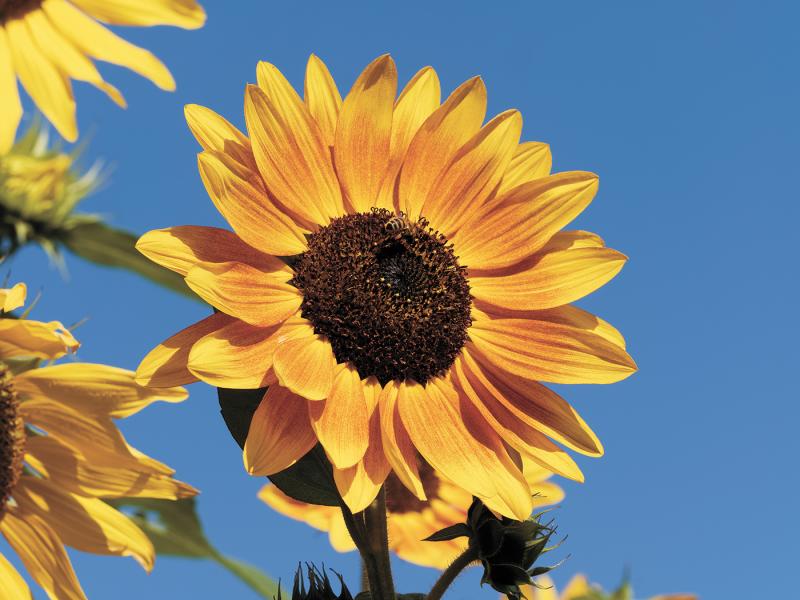During World War I, the countryside of Europe was dug up by bombs, artillery and marching armies. In the disturbed soil, red poppies bloomed, and they came to symbolize the war. Today, as war rages, flowers again inspire the suffering civilians, and this time, it is the stately sunflower (Helianthus annuus), the national flower of Ukraine. Brought to Europe in 1510 from America, they are called sunflowers because the flower heads look like the rays of the sun. Sunflowers are heliotropic, meaning that they turn their faces to follow the sun as it moves across the sky east to west. The blooms magically return at night to face the east, ready for the next morning's sun. When sunflowers are ripe with seeds, they stop following the sun’s trail and face east all day.
While we often see sunflower seeds sold as bird feed or snacks, in Ukraine and much of Europe, sunflowers are pressed for their light cooking oil. But almost all of the sunflower plant is edible. Sunflower sprouts, touted by The New York Times as a “secret weapon” for salads, are eaten much like alfalfa sprouts or bean sprouts. Sunflower leaves can be chopped into salads or steamed like spinach. Sunflower leaves can be baked into chips, much like kale chips. You can even make herbal tea from the leaves. You can eat sunflower seeds raw or roast your own by soaking the seeds overnight in salt water and then roasting them at 250-300 degrees F for a few hours until crispy.
Sunflower stalks are the lightest natural substance known to man, with a specific gravity that is just one-eighth that of cork. Young sunflower stalks can be eaten like celery; try some with peanut butter or dips such as hummus.
There are sunflowers for every garden, even dwarf varieties you can grow in flowerpots. Dwarf Teddy Bear is a double sunflower with a pincushion blossom on plants that only get a foot tall in pots or a bit larger in the garden. Big Smile is a dwarf sunflower bearing full-size traditional sunflower blooms. For giant sunflowers, try planting Grey Stripe. You can use the stalks to support growing pole beans, or make a children's hideaway with a tepee of sunflower stalks covered with runner beans or morning glories.
Sow sunflower seeds directly into the garden after all danger of frost has passed and the soil is warmed up. Sunflowers do not like having their roots disturbed, which is why it is best to plant them directly in the garden, rather than transplanting them. Choose a spot that gets direct sunlight with well-draining soil that doesn't stay muddy or soaked after it rains. Plant sunflower seeds 1 to 1-1/2 inches deep, 6 inches apart in rows 36 inches apart. Dwarf varieties can be planted closer together.
Sunflowers grow best in soil with a pH of 6.0 to 7.5 but do well in almost any soil. Sunflowers need a lot of food to grow so big so fast; help them by adding a slow-release organic granular fertilizer to the top few inches of soil. Because they can reach 12 feet tall in a few months, plant tall sunflowers out of the path of strong winds.
Plant sunflowers to provide nectar for the pollinators, seed for the birds, and snacks for the gardener. But most of all, plant sunflowers as a cheery reminder that we stand with Ukraine.



















































